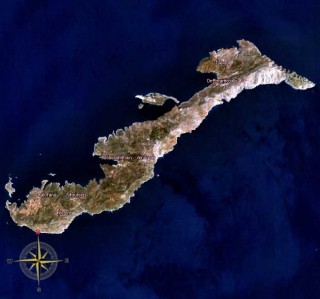
AMORGOS - CYCLADES ISLANDS - GREECE
Due to the position of Amorgos across from ancient beaches of Ionian towns, such as Militos, Alikarnasos and Efessos, it became one of the first places from which the Ionians passed through to the Cyclades Islands and onto mainland Greece. The existence of three independent cities with autonomous constitution and the same currency, which have been preserved to this day, the size and artistic works of the walls surrounding the city of Arkesini, the ancient towers to which skeletons were raised to this day all over the island, the ancient tombs, the stone tools, the inscriptions, the vases and other antiquities are all powerful proof of the size of the ancient civilisation of Amorgos. Amorgos is also known as Yperia, Patagy, or Platagy, Pagali, Psichia, and Karkisia. Part of the island is named Aspis, where the ancient temple of the Goddess Aphrodite stood. From the name Minoa we suspect that from ancient times Amorgos had been colonised by the Cretans. Also, according to Suidan and from inscriptions, Samians inhabited the island under the leadership of Simmias. With the passing of time the islands name changed to Amolgon, Amourgon, Amorgian, and Amourgian. After the 5th century you can also find the name Amoulgos from Bishop Theodore who signed a Synod in Constantinople, as Theodore the Bishop of Parion, Sifnion, and Amoulgion. Skilax mentions it as Tripoli (the circumnavigation of the Cyclades Islands).
From excavations and findings, especially burial tombs we believe that the presence of Amorgos during the prehistoric years existed intensely, particularly during the first period of Cycladic civilisation (3200 to 2000 BC).
AMORGOS - Greek CYCLADES ISLANDS - GREECE
EE ALL THE HOTELS ON MYKONOS ISLAND AT :
GET ALL INFO FOR MYKONOS HOTELS AT
MykonosTour Page ID: 120